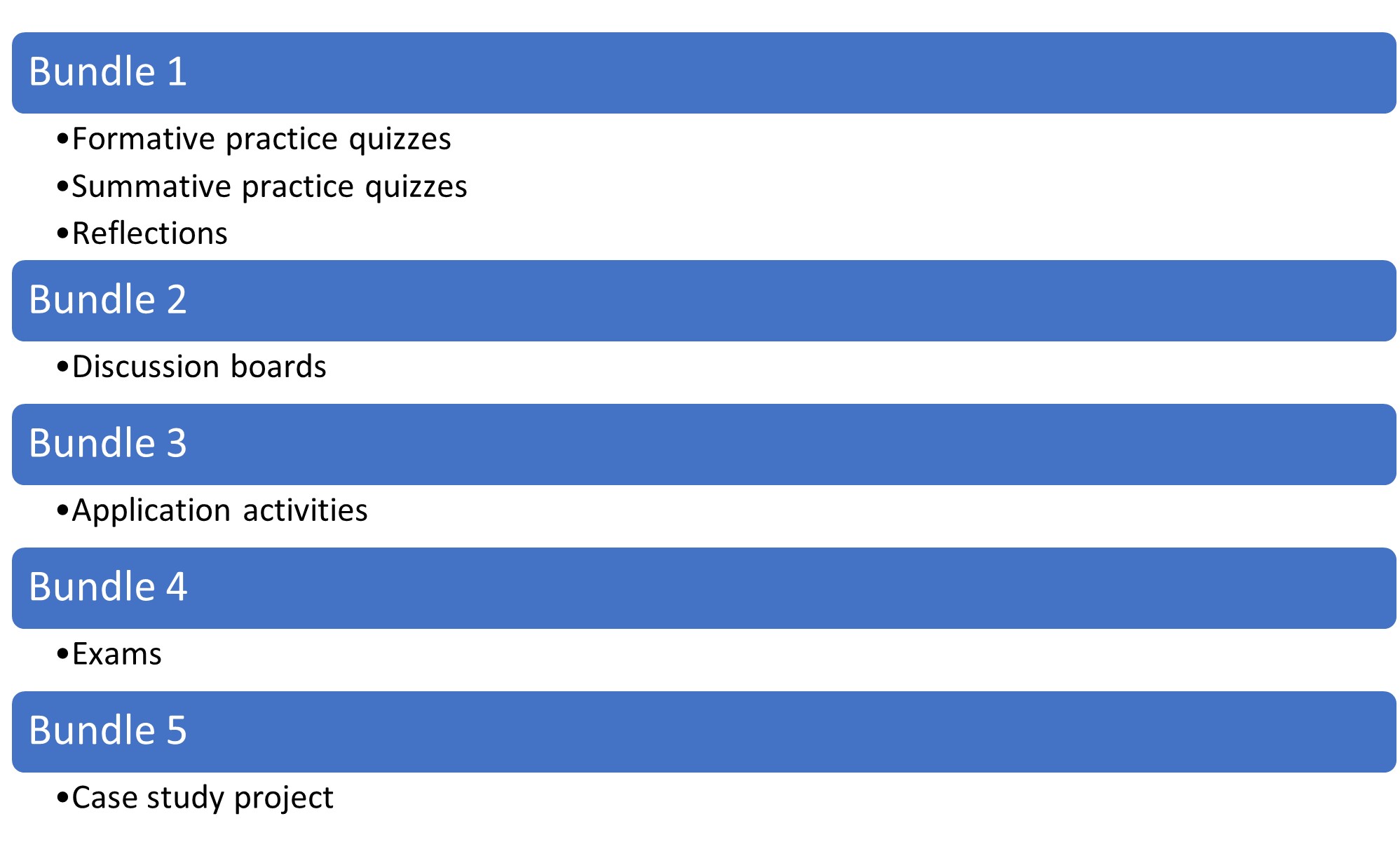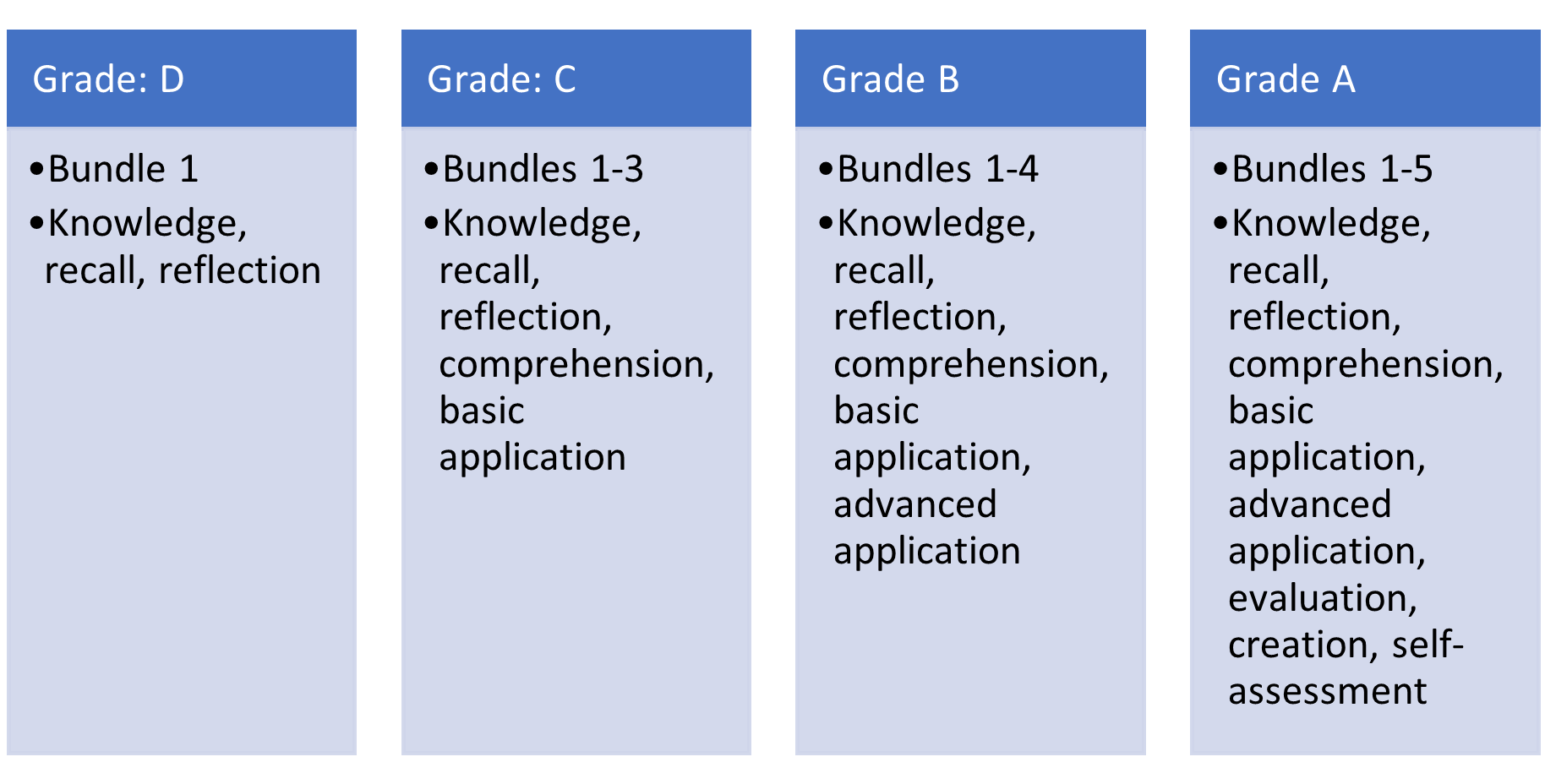I love teaching…but I hate grading. I imagine many of you can relate to this statement. How many hours have you spent agonizing over whether a student response should earn 3 or 4-points, or whether two students with very different but correct responses should earn the same grade? We generally agree that grading is important; it gives you and your students feedback about their knowledge, performance, and growth. It is a requirement of the University, and there is value placed on grading by external stakeholders (e.g., employers). However, grading in a traditional sense is exhausting, time-consuming, increases student stress, and is often inequitable as we can be influenced by writing quality, students’ prior knowledge, and other personal characteristics. You may believe that the traditional approach to grading, in which you allocate points based on supposed quality of work and assign a letter grade based on the number of points earned, is your only option. Fortunately, there is a new, more effective, less stressful way to grade—specifications grading.
What is specifications grading?
In specifications grading, developed by Linda Nilson (2014), you grade student work as satisfactory/unsatisfactory depending on whether their work meets the certain specifications you laid out for it. These specifications, or specs, can be as simple as “completeness” or as complex as a series of specific criteria you set out for the students. But instead of these criteria defining a grade of C- or D+, imagine that they truly define “satisfactory” as at least B work. Each assignment or assessment in your course is given specifications (i.e., what would make this assignment receive a grade of B or higher?), and as you grade, you look to see whether the assignment meets the specs for satisfactory performance for that assignment. If it does, they receive a satisfactory; if it does not, they receive an unsatisfactory. The table below shows the specs for my assignments in an undergraduate psychological sciences course.
|
Assignment/Assessment |
Specifications for Satisfactory |
|
Formative practice quizzes |
Completeness; student must complete the 5-point quiz with any score at least once, though they can retake as many times as they want |
|
Summative quizzes |
Student must earn at least 8 out of 10 points, and they can retake the quiz two times |
|
Reflections |
Completeness; student must respond to the reflection prompts completely |
|
Discussion boards |
Post one resource with a 2-sentence explanation connecting resource to class; respond to at least one classmate with how you would use their resource in your practice |
|
Application activities |
Write at least one paragraph (5-7 sentences) addressing the topic with at least two course concepts accurately included in the response |
|
Exams |
Student must earn a 75% or higher on the application-based exams |
|
Case study project |
Write between 8-12 pages (excluding title and reference pages) that defines, explains, applies, and analyzes an assigned case study using theory and principles from psychological sciences; student must include at least 3 separate ideas from cognitive perspectives, at least 3 separate ideas from developmental perspectives, at least 3 separate ideas from social/emotional perspectives, and at least 3 separate ideas from cultural perspectives. |
I must assign a letter grade at the end of the semester! How do I do that with satisfactory/unsatisfactory
grades on assessments?
One of the coolest things about specifications grading is the use of bundles of assignments. Students must complete all assignments in the bundle at a satisfactory level. Bundles that require more work, more challenging work, or both earn students higher grades. Students have more autonomy over their grades, as they get to select what grade they want to earn and know exactly what to do to earn that grade. You have more time in your schedule, as you are not spending time differentiating between a B and a B- anymore. To explain bundles of assignments, let me give you another example from my course. I have separated my course assignments in bundles. This figure shows each bundle of assignments.

Students select which bundle they would like to complete, knowing that higher bundles require the work of lower bundles. Depending on which bundle they complete, they receive different semester grades. This figure shows for each semester letter grade earned, what bundles students must complete and the corresponding level of learning outcomes in that bundle.

Now your grading is much simpler; if a student satisfactorily completes the work in a specific bundle, they receive the grade associated with that bundle. If a student does not satisfactorily complete the work in a specific bundle, they receive the letter grade for which they did satisfactorily complete the work. If they did not satisfactorily complete the work in any bundle, they fail the course.
What are the benefits to use specifications grading?
Specifications grading is very flexible. You can incorporate it into your entire course, as I described above, or you can incorporate it into a specific assignment. You can give students “tokens” to allow them to redo unsatisfactory assignments to improve their learning and performance. This grading system can be used in all fields and disciplines (e.g., recent research on specifications grading occurred in communications, political science, dietetics, accounting, chemistry, mathematics, speech-language pathology, biology, and information literacy) and in face-to-face, online, and hybrid settings (e.g., see Wasniewski et al., 2021). Specifications grading is an application of Universal Design for Learning (UDL) because it allows for flexibility, autonomy, and student decision-making. And most importantly, students are more motivated, produce higher-quality work, and have higher learning in courses that use specifications grading (Katzman, et al., 2021; Nilson, 2015; Vitale & Concepción, 2021). While at first it might seem different from what you are used to, the many benefits of specifications grading suggest that it is a better way to grade than the existing traditional grading system.
References & Resources:
Katzman, S.D., Hurst-Kennedy, J., Barrera, A, Talley, J., Javazon, E., Diaz, M., & Anzovino, M.E. (2021). The effects of specifications grading on students’ learning and attitudes in an undergraduate-level cell biology course. Journal of Microbiology & Biology Education, 22(3), 1-8. https://doi.org/10.1128/jmbe.00200-21
Nilson, L.B. (2014). Specifications grading: Restoring rigor, motivating students, and saving faculty time. Stylus Publishing.
Nilson, L.B. (2015). Specifications grading [podcast]. Available at teachinginhighered.com/podcast/specifications-grading
Vitale, S.E. & Concepción, D.W. (2021). Improving student learning with aspects of specifications grading. Teaching Philosophy, 44 (1), 29-57. https://doi.org/10.5840/teachphil2020121133
Wasniewski, E., Munro, T., & Tandon, T. (2021). Exploring online specifications grading: An undergraduate course case study. Proceedings of EdMedia + Innovative Learning, pp. 179-184.

